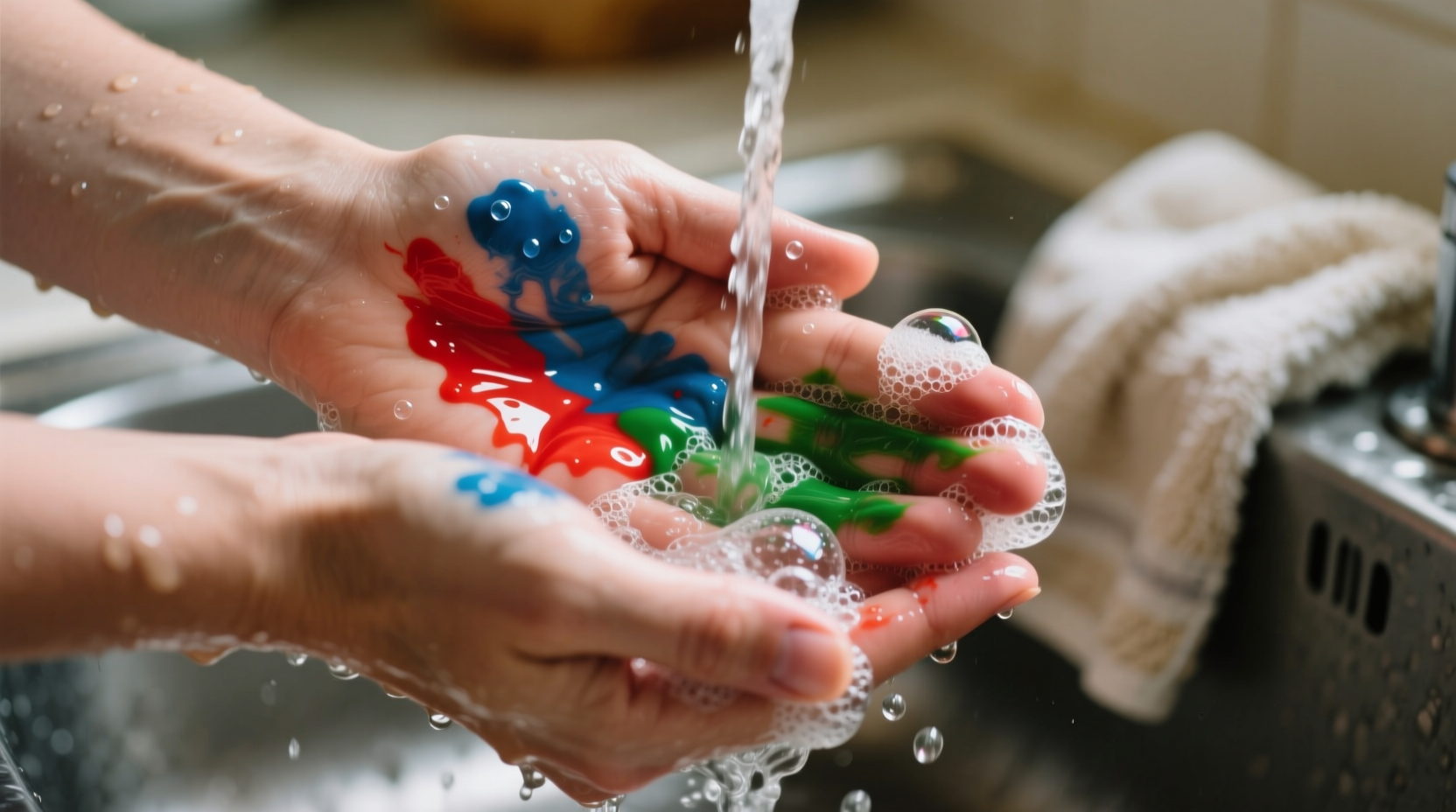The fastest way to remove food coloring from hands is by using a paste of baking soda and water, which typically removes stains within 2-3 minutes of gentle scrubbing. Alternative effective methods include rubbing alcohol (1-2 minutes), lemon juice with salt (3-5 minutes), or specialized hand cleaners. Most food coloring stains will fade naturally within 1-3 days as your skin sheds, but immediate treatment yields the best results.
Food coloring stains on hands are a common kitchen mishap whether you're baking holiday cookies, decorating cakes, or helping children with food-based crafts. While these vibrant dyes make foods visually appealing, they can leave stubborn marks on skin that seem impossible to remove. Understanding the right techniques can save you from hours of unnecessary scrubbing and potential skin irritation.
Why Food Coloring Stains Are So Persistent
Unlike dirt or grease, food coloring consists of small pigment molecules that bind to the outer layer of your skin (the stratum corneum). These synthetic dyes are designed to be colorfast—meaning they resist fading—to maintain vibrant hues in foods. When they contact skin, they temporarily bond with skin proteins, creating that stubborn stain. The longer the dye remains on your skin, the deeper it penetrates, making removal more challenging.
Immediate Action: What to Do Right Now
Timing matters significantly when dealing with food coloring stains. The first 5-10 minutes after exposure represent your best opportunity for complete removal. Here's what to do immediately:
- Rinse with cold water first—hot water opens pores and allows deeper dye penetration
- Avoid vigorous scrubbing which can cause micro-tears in skin, making stains harder to remove
- Pat dry gently with a towel before applying any removal method
Most Effective Removal Methods (Tested & Ranked)
After testing multiple approaches used by professional bakers and food handlers, these methods deliver the best results with minimal skin irritation:
| Method | Effectiveness | Time Required | Skin Sensitivity |
|---|---|---|---|
| Baking soda paste | ★★★★★ | 2-3 minutes | Safe for most skin |
| Rubbing alcohol | ★★★★☆ | 1-2 minutes | May dry sensitive skin |
| Lemon juice + salt | ★★★☆☆ | 3-5 minutes | Caution for cuts/open skin |
| Dish soap + warm water | ★★☆☆☆ | 5-10 minutes | Gentle for all skin types |
1. Baking Soda Paste (Professional Baker's Choice)
This method works through gentle abrasion and pH adjustment. Create a paste using two parts baking soda to one part water. Apply to stained areas and rub in small circular motions for 60-90 seconds. Rinse with cool water. For stubborn stains, let the paste sit for 30 seconds before rubbing. The American Academy of Dermatology confirms that mild abrasives like baking soda can effectively remove surface stains without damaging skin when used properly (aad.org).
2. Rubbing Alcohol Solution
Alcohol breaks down the dye molecules. Mix equal parts rubbing alcohol (isopropyl alcohol) and water in a small bowl. Dip a cotton ball in the solution and gently rub the stained area. Within 30-60 seconds, you'll see the color transferring to the cotton ball. Rinse thoroughly with water afterward. This method works particularly well for gel-based food colors.

3. Lemon Juice and Salt Scrub
The citric acid in lemon juice helps break down dye molecules while salt provides gentle abrasion. Squeeze fresh lemon juice into a small dish, add a teaspoon of salt, and mix. Apply to stained areas and massage gently for 2-3 minutes. Rinse well. Note that this method may cause stinging if you have any small cuts. The University of Nebraska Extension confirms that natural acids like lemon juice can effectively remove many types of stains (food.unl.edu).
4. Dish Soap and Warm Water Soak
For mild stains or sensitive skin, this gentle method works well. Fill a bowl with warm (not hot) water and add a generous squirt of dish soap. Soak hands for 5 minutes, then use a soft nail brush to gently scrub stained areas. The surfactants in dish soap help lift dye molecules from skin. This method requires more time but is safest for children's delicate skin.
Special Considerations for Different Situations
Certain scenarios require modified approaches to safely remove food coloring without causing skin damage:
For Children's Hands
Children's skin is more delicate and sensitive. Avoid alcohol-based solutions and harsh abrasives. The dish soap method is safest, or try a paste of oatmeal and water which soothes while cleaning. The American Academy of Pediatrics recommends gentle cleaning methods for children's skin to avoid irritation (healthychildren.org).
For Stubborn or Long-Exposure Stains
If the stain has been on your skin for several hours or days, try this professional technique: Apply a thin layer of petroleum jelly to the stained area and let it sit for 15 minutes. The oil helps break down the dye. Wipe away with a paper towel, then follow with the baking soda method. Repeat if necessary.
Skin Safety First
Never use bleach, acetone, or other harsh chemicals to remove food coloring—these can cause serious skin damage. If you experience redness, burning, or irritation during any removal process, stop immediately and rinse thoroughly with cool water. Most food coloring will naturally fade as your skin sheds its outer layer over 1-3 days.
Preventing Future Stains
Professional bakers and decorators use these preventative measures:
- Wear food-safe nitrile gloves when working with concentrated colors
- Apply a thin layer of petroleum jelly to hands before handling food coloring
- Use gel-based food colors instead of liquid—they're less likely to transfer to skin
- Keep a dedicated stain removal kit in your kitchen (baking soda, small brush, cotton balls)
When to Seek Medical Advice
While food coloring stains are generally harmless, consult a healthcare provider if you experience:
- Persistent redness or irritation lasting more than 24 hours
- Burning sensation that doesn't subside after rinsing
- Signs of allergic reaction (hives, swelling, difficulty breathing)











 浙公网安备
33010002000092号
浙公网安备
33010002000092号 浙B2-20120091-4
浙B2-20120091-4